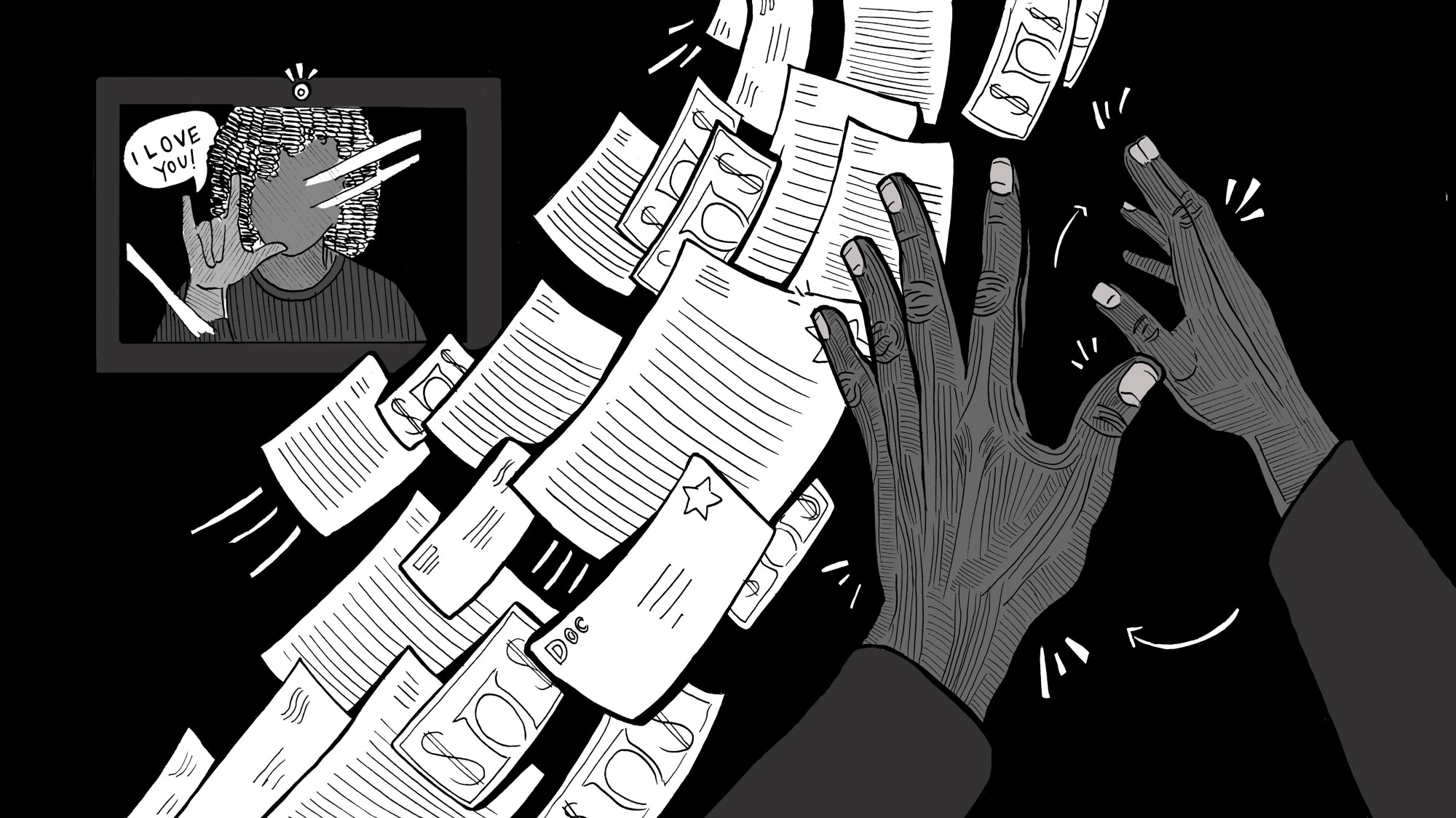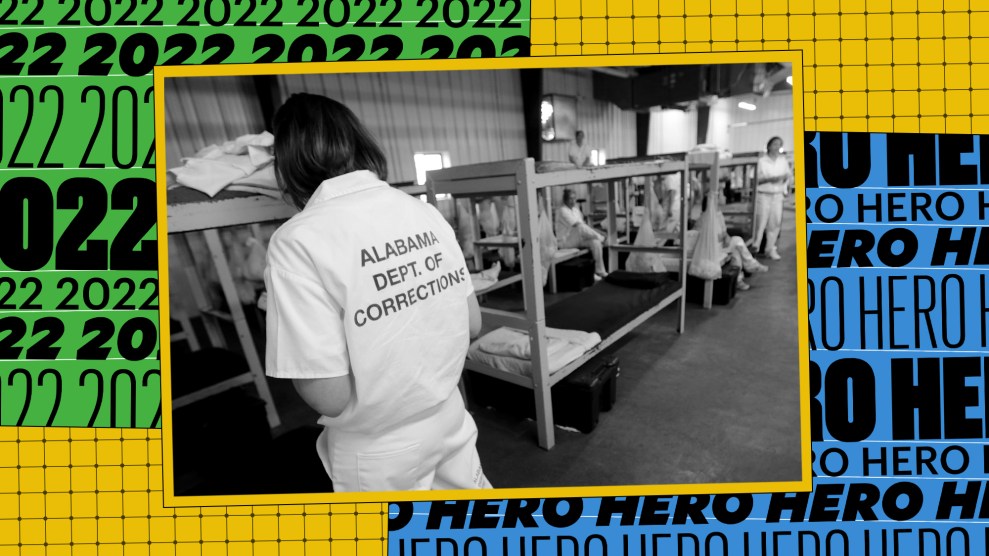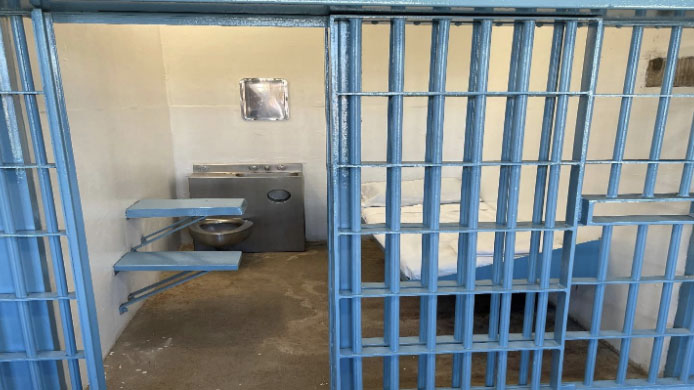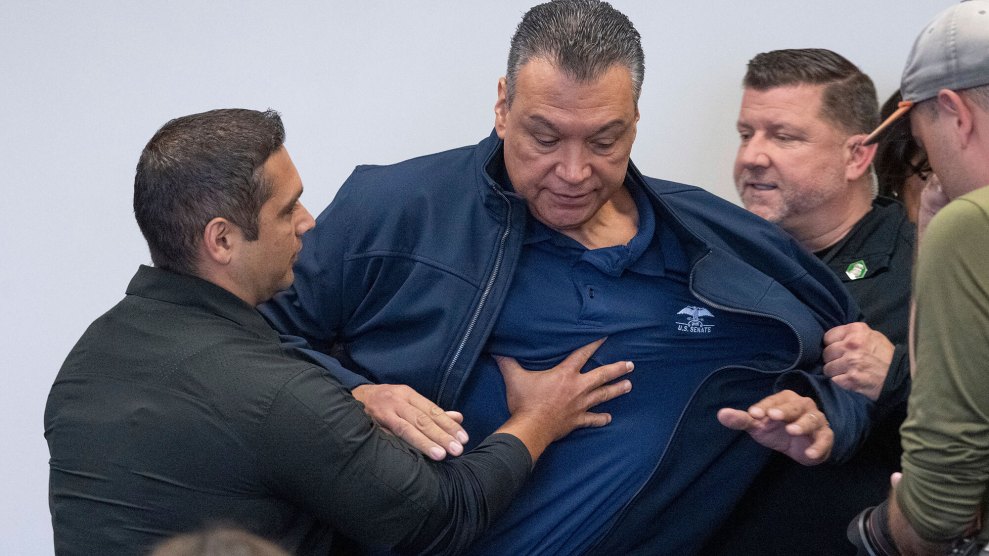This article was published in partnership with The Marshall Project, a nonprofit news organization covering the U.S. criminal justice system. Sign up for their newsletters, and follow them on Twitter, Instagram, and Facebook.
For four years, while incarcerated in Maryland state prison, Alphonso Taylor, 49, said he was the only deaf man in his unit. And he had no way to call or communicate with his loved ones outside of prison, who used sign language.
“I feel really alone,” he told advocates in a September 2020 videophone call from a Baltimore County jail. “I’m constantly holding back a rage from deprivation of information.”
During the pandemic, phone calls became an even more vital lifeline for people in prison. But many deaf incarcerated people were still cut off from meaningful communication, as few had access to the technology needed to sign with family at home.
In a major step in the fight over accommodations for deaf people behind bars, the Federal Communications Commission will soon require all prison phone companies to provide video communication services for deaf and hard-of-hearing prisoners. The new order, which goes into effect in January 2024, also applies to people in jails, immigration detention, juvenile detention, and secure mental health facilities nationwide.
“Incarcerated people who are deaf, hard of hearing, deafblind, or who have a speech disability are in a prison within a prison,” wrote Jessica Rosenworcel, chairwoman of the FCC, announcing the new rule last September.
The FCC order covers multiple kinds of communication technology. Point-to-point videophone calls, a specific system for deaf users, allow two signing people to communicate directly. Video relay services allow someone to sign to an interpreter via video, and the interpreter then speaks to a hearing person on the other end of the line. And captioned telephones provide typed captions to phone calls for people who are hard of hearing.
Disability rights groups have remaining concerns about the policy, mainly about the potential cost to users. Calls inside and outside of prison are currently free for people with communication disabilities, covered by a federal fund. But the FCC’s new order allows companies to charge prisoners for some calls, such as a point-to-point videophone call between two signing people. And the new requirement only applies in corrections systems that have a broadband internet connection and that detain more than 50 people across all their facilities.
Some prison officials have resisted installing videophones, saying they are hard to monitor, and many departments have been sued over a lack of access. The new rule applies only to phone companies and is not binding to corrections departments. But FCC officials said it “sends a strong signal” that these services should be made available.
A spokesperson for Aventiv Technologies, the parent company of prison phone company Securus, said accessibility was a “proactive priority” for the company, and that they already offer video relay services in prisons.
Supporters of the new rule say phone access in prison is especially important for deaf people, as many are incarcerated without any other signing people. A call using a videophone may be their only chance at conversation. Many are unable to communicate with lawyers or advocates about appeals, the abuse they may be experiencing, or plans for their return home.
“However long a signing person is incarcerated, they are often completely deprived of any communication with any other human,” said Talila Lewis, co-founder and former executive director of HEARD, a disability rights organization that advocates for abolishing prisons. The group has been pushing for the FCC rule change for over a decade, enlisting national disability rights organizations and others working to lower prices for prison phone calls overall. HEARD gathered hundreds of comments from deaf people in prison and their families to submit to the FCC.
Some prisoners told HEARD that they were so cut off from information, they didn’t know what COVID was until months or a year into the pandemic. “People lose their ability to sign,” Lewis said. “They lose language.”
HEARD estimates there are tens of thousands of deaf and hard-of-hearing people incarcerated in the US. In a 2016 survey by the federal Bureau of Justice Statistics (the most recent report available), roughly 10 percent of surveyed state prisoners and 6 percent of federal prisoners reported having a hearing disability.
Many in prison are still made to use teletypewriters (TTY), a system that requires users to type their messages. But those whose primary language is American Sign Language may not be comfortable communicating in written English. And TTY connections can be slow and error-prone. Outside of prison, most deaf households stopped using that technology years ago, in favor of videophones.
Some prison officials have said videophones pose unique security problems. In a 2017 federal court filing in North Carolina on behalf of the Federal Bureau of Prisons, the head of the agency’s office of security technology argued someone could use a videophone to depict how to build a bomb or manufacture drugs. The filing also said staff who monitor video calls would have to record and translate everything communicated in ASL. The court ultimately required the BOP to install a videophone at the facility, 11 years after the lawsuit was filed.
Under the Americans with Disabilities Act, deaf prisoners have a right to communication that is as effective as communication for people without disabilities. To ensure access, attorneys have been suing corrections departments across the country over videophones and other accommodations, such as ASL interpreters for disciplinary hearings. Corrections departments in states including Maryland, Kentucky, Illinois, Massachusetts, and Vermont have settled such lawsuits and agreed to install videophones and relay systems; a case is ongoing in Tennessee.
Michigan settled a similar lawsuit in 2019 and installed video relay services and videophones in 2019 and 2021 in over a dozen facilities. Public Information Officer Chris Gautz said there had been no security concerns with the phones so far. “When prisoners have these needs, it’s our duty to provide for them, even if it’s a small population,” he said. “We know how important it is to maintain contact with their community.”
Supporters of the new rule stress that “video visitation,” which expanded during the pandemic, is not the same as access to a videophone or video relay system. Video visits, which some prisons have used to replace in-person visits entirely, are even more expensive than traditional phone calls, available intermittently, and sometimes require family members to be on-site. They also aren’t built to be used by people who use their hands to communicate and might require someone to hold a receiver or only show their face.
The FCC is still accepting public comments over the order. Advocates continue to object to the potential charges for some calls and are asking for the inclusion of smaller corrections departments. “We’re trying to get free [calls] across the country,” said Cheryl Leanza, policy advisor with the United Church of Christ Media Justice Ministry. “And now the FCC is saying, ‘This was free, but we’re going to go backward?’”
Leanza’s group recently lobbied for legislation that would allow the FCC to regulate all prison phone call prices, including videophones. President Joe Biden signed that bill into law in January.
Taylor, who was incarcerated in Maryland, was able to share his story with FCC commissioners using an internet video conference service in May 2021, while on home confinement with an ankle monitor. He died just a month later. Officials cited his testimony in announcing the new policy.
“Videophones safeguard deaf people’s futures,” Taylor said in 2020, referring to the damage of spending years without access to communication. “They make sure we can understand things clearly.”
An American Sign Language interpretation of this story by Erin Sanders-Sigmon. (Video edited by Leang Ngo; translation by COCOA, LLC)

















